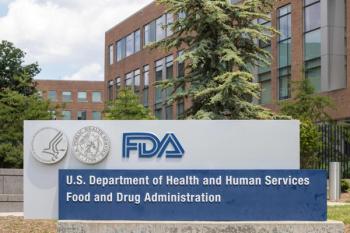
Outlook for Health System-Based Specialty Pharmacy in 2022 and Beyond

With integrated specialty pharmacies enabling health systems to improve patient outcomes and lower total medical costs, every hospital will need a solution to support the growing number of patients on outpatient specialty medications.
Specialty pharmacy remains the largest opportunity for health systems and their patients over the next 5 years: driving improved outcomes, a better patient experience, and more than $100 billion incremental economics. The specialty market is projected to continue growing by 8% per year driven by new specialty products coming to market, continued expansion of the specialty population, and drug price increases through 2025.
With integrated specialty pharmacies enabling health systems to improve patient outcomes and lower total medical costs, every hospital will need a solution to support the growing number of patients on outpatient specialty medications. As health systems realize the benefits of integrated specialty programs, we see more health systems leveraging this model as the exclusive or preferred pharmacy choice for their employees and at-risk lives.
National pharmacy benefit managers (PBMs) and payers are now launching health system specialty pharmacy networks to realize the benefits of better care and lower costs.
We expect to see continued growth in the specialty market, driven not only by wider use of existing therapeutics, but also by new-to-market drugs. Of the estimated $118 billion total specialty market expansion through 2025, we anticipate new products to account
Growth in neurology and endocrinology are largely driven by pipeline products. In 2022, we are seeing expansion in specialty cardiology drugs with the recent approval of
The influx of new specialty medications to the market is, in part, driven by the growth of the specialty population in the United States. A report from the
Specifically, the
The release of new products—such as growth hormone treatment lonapegsomatropin-tcgd (Skytrofa), sotorasib (Lumakras) for non-small cell lung cancer, and asciminib (Scemblix) for chronic myeloid leukemia—will play a role in increasing the population serviced by specialty medications from 1% of Americans to 2%-3% over the next 5 years.
On the drug pricing front, we expect to see continued price increases for existing and pipeline products, ahead of future pricing pressures from biosimilars, competitive products, and potential drug price legislation. Although the
In the latest draft, the Centers for Medicare and Medicaid Services would have the ability to negotiate directly with drug manufacturers on select drugs starting in 2025. This could lower drug pricing by at least 5%-10% per year post-implementation. The bill would also cap drug price increases by mandating rebates for the amount that prices exceed the annual rate of inflation, based on 2021 prices.
Throughout 2022, we will be monitoring the progress of this or similar legislation to see what impact it will have on the specialty pharmacy market. In the absence of legislation action, we expect specialty drug prices
We expect new products to largely be managed via a limited distribution drug (LDD) model, often with stricter administration and reporting requirements. Today, 80% of manufacturers are already using limited distribution networks for their drugs, with 150 more LDDs in
Shields Health Solutions has responded to this tightening of the network by helping health systems navigate and address the requirements of drug manufacturers to meet the criteria for network inclusion. Shields has expansive capabilities in establishing Elements to Assure Safe Elements Risk Evaluation Mitigation Strategy protocols within health system pharmacies, helping NYU Langone to become the first integrated delivery network (IDN) in the nation to receive Risk Evaluation and Mitigation Strategies certification for vigabatrin, an anti-seizure medication.
Every health system will need a solution to support the expansion of the specialty population
Health systems have responded to these market dynamics. With approximately 90% of all large hospitals operating their own specialty pharmacy, optimizing specialty pharmacy services and controlling costs for specialty patients have never been bigger considerations than they are today.
Integrated specialty pharmacies
We have seen this service offering result in increased patient Net Promoter Scores (NPS) in the mid-80s and improved clinical outcomes. A recent
As health systems realize the benefits of the IDN model, they will seek to capitalize on savings for at-risk lives in their network
As health systems grow their integrated specialty pharmacies, they can realize the benefits via improved patient health outcomes, which in turn translate to lower total medical expenditure. Alongside the benefit to their own patients, health systems will look to carry these health improvements and savings to at-risk members under their care.
Many health systems have self-funded employee plans, health system-managed patient health plans, or affordable care organizations (ACOs) for which the health system can have some element of control over where these covered lives receive their care.
These “
Shields has witnessed these benefits through firsthand experience with our health system partners.
The outcomes found a reduction of more than $1000 per member per month (PMPM) in their total medical expenditure by virtue of benefitting from the integrated care model. Building on these outcomes within their ACO, UMass Memorial Health recently announced that it has applied to the federal government to launch its own
We expect to see additional health systems incentivizing at-risk plan members to fill with their onsite specialty pharmacies for both existing and newly launched plans.
Payers and PBMs will seek to partner with Health System networks to benefit from the improved outcomes and lower costs
We expect health systems to capture more than 25% of the specialty pharmacy market by 2025 through offering a more efficient and effective care model for patients. With networks such as Shields Health Solutions representing more than 70 health systems and more than 35% of the non-profit market, we expected more payers and PBMs to partner with health systems proactively
IDNs create the opportunity for greater visibility for physicians, lower fulfillment costs, and higher patient adherence rates. Patients who can stay on treatment correctly have lower total medical expenditures and better health outcomes.
With more of the market represented by health systems, payers and PBMs will adapt accordingly to capitalize on the opportunities allowed by these IDNs. New specific access networks will be launched for health systems to fully maximize these outcomes.
With patients, providers and employers citing specialty pharmacy as one of their top costs, health outcomes, and overall experience pain points, we will see payers and PBMs embrace the solution that tackles all 3 of these issues.
Newly launched access networks, such as
As the specialty market continues to grow, health systems are uniquely positioned to bring significant value for patients in their networks. An IDN allows patients to receive superior care while generating savings for themselves and their plan.
At Shields, we are excited to see more health systems turning their focus on how to capture these benefits. Health systems nationwide are launching or looking for ways to grow their own specialty pharmacies and are structuring health plans in their control to reap the rewards of patients filling onsite.
We expect to see payers and PBMs seek to capitalize on these benefits as well, and structure health system access network plans of their own, seeking to further drive volume to these integrated health system specialty pharmacies. As we turn to 2022, we are excited to see just how much the specialty market will continue to evolve.
About the Authors
Stephen West is the Chief Strategy Officer and David Filstein is a Sr. Director of Corporate Strategy at
Newsletter
Stay informed on drug updates, treatment guidelines, and pharmacy practice trends—subscribe to Pharmacy Times for weekly clinical insights.

















































































































































































































